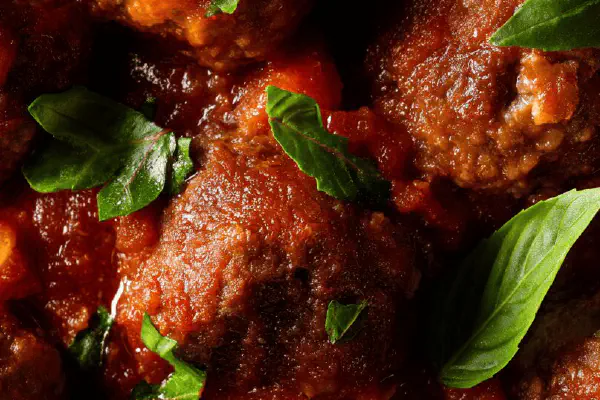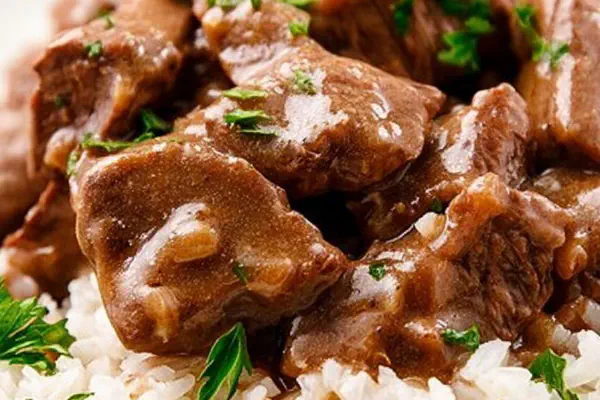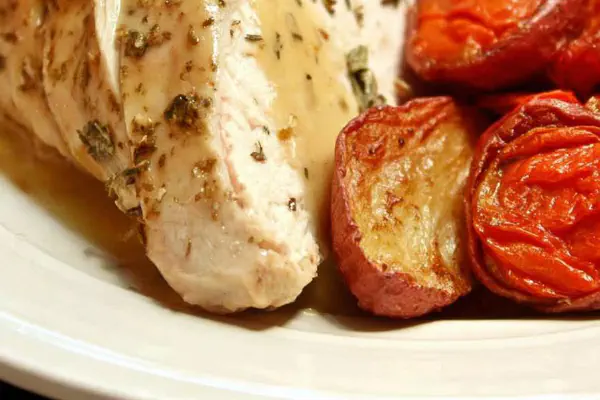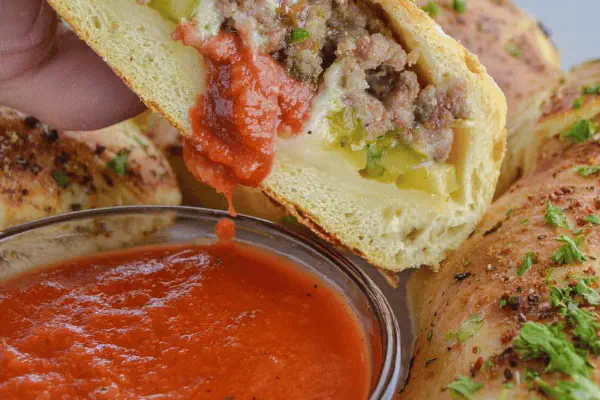Slow Simmer Meatball Sauce
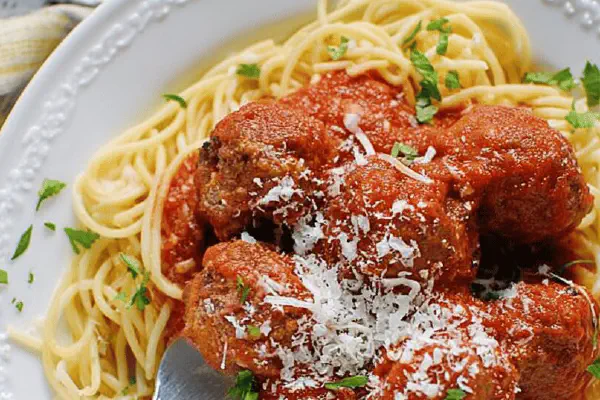
By Emma
Certified Culinary Professional
Ingredients
- 1/4 cup olive oil
- 2 medium yellow onions, finely chopped
- 5 cloves garlic, minced
- 80 ounces crushed tomatoes, canned
- 30 ounces diced tomatoes with juice, canned
- 2 tablespoons minced fresh oregano
- 2 teaspoons ground black pepper
- 4 bay leaves
- 1-2 pounds cooked homemade or store-bought meatballs, sliced
- 1 pound mild Italian sausage, casing removed and crumbled
- 14 ounces fire-roasted canned mushrooms, drained
About the ingredients
Method
- Warm the olive oil in a large Dutch oven on medium. You want gentle heat but hot enough so onions sizzle when they hit the pan. Toss in the finely chopped onions. Stir regularly, keep an eye—the onions should go translucent, glossy but not browning. This softness builds foundation flavor.
- Add the minced garlic after about 5 minutes. Garlic burns fast—don’t add too soon or it’ll turn bitter. Stir constantly, smell the garlicky aroma building. When fragrant but before color, dump in the crushed tomatoes and diced tomatoes with their juices. Use everything in the cans to keep sauce deep and textured.
- Now sprinkle in freshly minced oregano (best to mince yourself—dried feels flat to me), ground black pepper, and slide in the bay leaves like little flavor bombs. Stir. Then add sliced meatballs. These should be pre-cooked, whether from fridge or frozen and thawed. Crumble in mild Italian sausage raw, letting it render fat slowly and add richness. Fold in drained fire-roasted mushrooms instead of canned plain for a more robust earthiness.
- Drop heat almost to the lowest setting possible. Lid ajar to let steam sneak out. Watch bubbles—barely a simmer, not rolling or burning. If sauce starts sticking, stir gently but often to prevent scorch marks. If scorching happens, add a splash of water or red wine to rescue pan bits without diluting flavor.
- Simmer for roughly 4 to 6 hours, but trust what you see and smell more than clock. The sauce will thicken, darken in color, and deepen aromas. Meatballs become tender inside, sausage softens and melds. Mushrooms plump up, onions dissolve, and little tomato bits break down releasing their juice. You should see the crust forming just a bit on the bottom—thin and golden—that’s flavor gold. Stir every 30 minutes or so.
- When ready to serve, cook your favorite pasta until just shy of al dente—remember it will soak sauce and soften further. Drain well, but keep some pasta water handy to loosen sauce if needed.
- Remove bay leaves carefully—don’t want biting into one—discard.
- Ladle sauce and meatballs generously over pasta. Top with freshly grated Parmesan or Pecorino cheeses. Crushed red chili flakes if you want some fire. Stir a bit and enjoy the layers—meaty, herby, tomato tang, and heat.
- If things taste muted, add a pinch of salt near the end and swirl in a teaspoon of balsamic vinegar to brighten. Always adjust seasonings last.
Cooking tips
Chef's notes
- 💡 Heat olive oil medium, not hot. Onions sizzle softly, transparency signals ready. Patient stir prevents crisping or browning. Builds deep foundation flavor; texture matters here. Garlic goes in only once onions are translucent, avoid bitter char or burnt taste.
- 💡 Use canned crushed and diced tomatoes with juices included. Keeps acidity balanced, chunky texture layered; pureed tomatoes if smoother wanted. Herbs early; fresh oregano better than dried for punch. Bay leaves tucked in whole, remove before serving to dodge woody chunks.
- 💡 Sausage raw, crumbled in. Renders fat, adds richness in slow layers. Meatballs pre-cooked, sliced—adds texture and meaty bites, thaw fully if frozen. Mushrooms drained well; fire-roasted version boosts umami. Plain canned mushrooms okay, but water sogs sauce down if not drained.
- 💡 Simmer low, lowest heat possible. Lid ajar to avoid steam condensation pooling. Stir every 30 minutes to prevent scorching. If scorch marks start, splash water or red wine—keeps bits but rescues flavor. Watch bubbles—not rolling boil; gentle barely-there bubbles signal steady cooking.
- 💡 Timing flexible; roughly 4-6 hours but look reactions. Sauce thickens, darkens, aromas deepen—onions dissolve, mushrooms plump, meat softens. Crust on bottom thin and golden shows flavor development. Adjust seasoning at end: salt pinch, splash balsamic brightens flavors, cheese topping adds depth.
Common questions
Can I swap pork sausage for chicken?
Yes but watch dryness. Chicken leaner, so add fat or oil. Texture changes; less rich. Sausage spices maybe adjusted. Use milder chicken sausage if possible or moisten with broth during simmer.
What if sauce scorches?
Stop immediately. Lower heat. Add splash water or red wine to loosen stuck bits. Stir gently; keep bubbles small. Frequent stirring prevents burning; thicker pot bottom helps distribute heat better. Backup: use heavy-bottom pot or diffuser.
How to tell meatballs perfectly tender?
Texture soft but intact. Taste test piece after few hours. Should break down inside but not disintegrate. Smell rich, aromas melded. Mushrooms and onions soften too. Visual cues — chunks stay but yield when poked.
How to store leftovers?
Cool fully before fridge. Store airtight; last 3-4 days chilled. Freeze in portioned containers up to 3 months. Reheat slowly, low simmer or microwave with lid loose. Add splash water if thickened too much. Re-season slightly after reheating if flavor muted.
